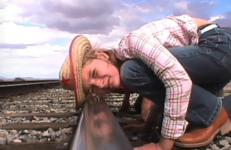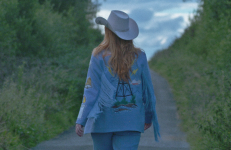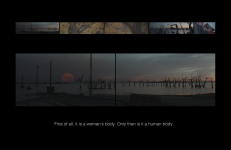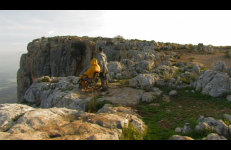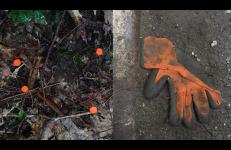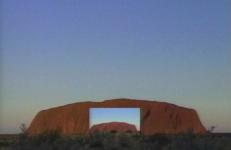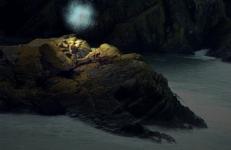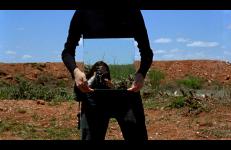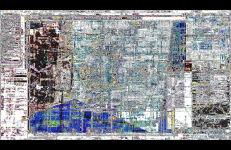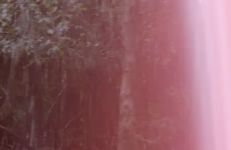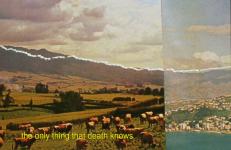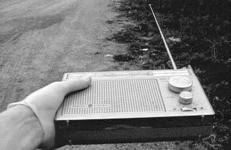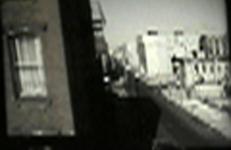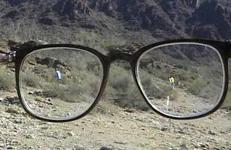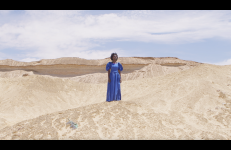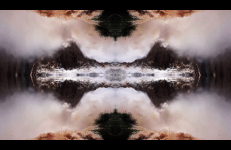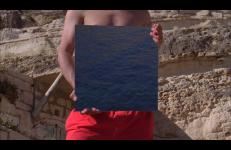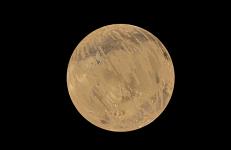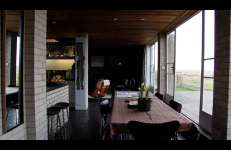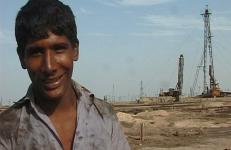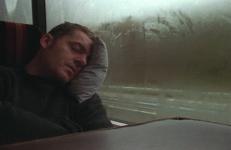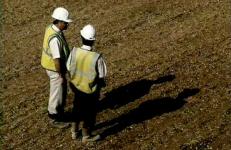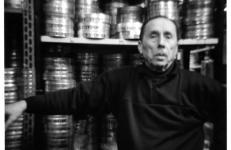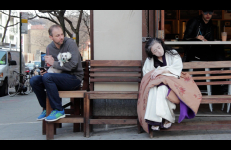1.1 Acre Flat Screen is a 45-minute video about a year-long effort to improve a lot of 1.1 acres of desert land in Utah, which we purchased on September 4th 2002 on eBay. The video starts with ways of finding a lot in the desert, using satellite images, topographical maps, a compass and string. It displays ideas and plans on how to improve the land’s value and documents our preparations to face the unforgiving desert.
Landscape
2 Channel Land is a north-western docu-fiction film exploring the history of analogue signals spilling across the borders of Ireland and Britain. Guided by a mysterious threshold deity, we take a journey through Ireland's borderlands in search of community.
The sonic fabric of 2nd Person, [originally] a multi-channel video installation, is formed through an array of women’s voices orchestrated as parallel tracks in a musical composition. The speakers, all women I have intimately known at different points in my life -- my child, my mother, my best friends, students, mentors -- talk with me about aging, growing up, death, motherhood, love and loss.
In 50 Blue a young man (the artist’s brother) pushes an elderly disabled man (the artist’s father) in a wheel chair through a muddy landscape. It is a long and exhausting trip to an unknown destination only discovered at the end. After an arduous struggle the two arrive at the edge of a grey lake where a 10-meter high guard tower stands. The young man ties the wheel chair to a rope and hoists the old man up on the tower platform with the help of eight men, all dressed in yellow plastic raincoats.
For over two years we made it our business to document abandoned working gloves on the streets of NYC. The feelings and thoughts that surrounded this activity connected to the ways his family relates to Gregor Samsa as a cockroach, or whatever Franz Kafka intended him to be in The Metamorphosis after his transformation from a productive citizen to a useless insect. When Gregor can't grant them a comfortable life-style any longer, his family starts to resent and hate the once loved and respected provider, finds him disgusting.
A huge isolated rock in the midst of the desert in Australia: Ayers Rock. I produced two contrasting films around this rock: Moments at the Rock was shot with an amateur video camera, amazing color changes, and time-lapsed compressed sequences; A Rock in the Light, edited with the music of Haruyuki Suzuki, is more visually structured, following the passing of time from the sunrise to the sunset.
--Takahiko iimura
"Takahiko iimura's Air's Rock is an ultimate landscape film."
--Katsuhiro Yamagucki, artist and author
Presented as a fictional documentary, the sound film All the Time in The World sees the millions of years that have shaped and formed the land, played out at the speed of sound.
Semiconductor have reanimated Northumbria's epic landscape using data recordings from the archives at the British Geological Survey in Edinburgh. This data of local and distant seismic disturbances has been converted to sound and used to reveal and bring to life the constantly shifting geography around us.
American sculptor and land artist Robert Smithson made art as a meditation on transition and change. Perhaps best known for his Spiral Jetty, an earthen berm that sits, occasionally submerged, in the Great Salt Lake of northern Utah, Smithson understood that his earthworks would be subject to natural and human forces and processes: erosion, rising water tables, and changing land use.
American sculptor and land artist Robert Smithson made art as a meditation on transition and change. Perhaps best known for his Spiral Jetty, an earthen berm that sits, occasionally submerged, in the Great Salt Lake of northern Utah, Smithson understood that his earthworks would be subject to natural and human forces and processes: erosion, rising water tables, and changing land use.
An all-over textile constructed under the spell of Arachne, an audiovisual textile in five parts that exposes a web of raids in construction over the american houses, a landscape of protests under the webs of segmented time, the entrails of the american factory in movement through the endless american party.
For four years in the 1860’s, half of the United States was held hostage by an unrecognized white supremacist republic. Shot on 16mm in national military parks, swamps, forests and the suburban sprawl across the former battlefields, the film follows General Grant’s path liberating the southern United States. Part travelogue, part essay film, part landscape documentary, it moves from the Texas-Louisiana border to a prison island off the coast of New England.
The horizon, where the sky and the earth meet, is always elsewhere, a promised place where these two elements come together. A metaphor, an orienting, a promise of transition, change, transcendence. A place where the corporeal and spiritual meet, or are cleaved apart.
This absurdist, microscopic film noir follows the activities of an underground network of ill people, desperate to create alternative methods of self-care in a world where natural resources are disappearing. While examining the meaning of health, disease, and well-being in the post-industrial world, Apple Grown In Wind Tunnel imagines the development of a culture at the margins, linked by illicit radio broadcasts, toxic waste sites, the highway, and ultimately by the overwhelming desire to find a cure.
Film and video maker Ken Kobland returns to the urban landscapes he filmed 20 years previously, such as the New York subway and the S-Bahn in Berlin. We leave, we travel, but it’s always the same images that we are drawn to. A moving road movie about eternal departure and arrival.
A cactus-strewn desert becomes the backdrop for this series of filmic stopovers that focuses on the living quarters assigned the assignee of this adventurous arrangement. Great natural beauty clashes with manufactured outdoorsmanship, as a tired body and sluggish mind seek the oblivion of hotel hospitality in an arid region of artistic aspirations. The viewer is introduced to a world of prickly plants and satin-skinned succubi who prowl the alleys of western decay to staple their fig leaflets on the vertical shafts that poke unsheathed at the virgin skies of southern Arizona.
As If the World Had No West tells of the journey of a young woman who travels through the desert and who, through her relationship with the Mirabilis, ancient plants, listens to the cosmos. She listens to her elders, the earth, fire and air. The drought calls the rain, the ashes show the way, the plants tell her the stories of colonization, of the beginning of the world when the desert was still scrubland and there were trees and flowers.
As profecias da Orixá Oxum (The Prophecies of the Waterfall Spirit Oxum) was filmed at Iguaçu Falls, Brazil/Argentina, and is intended for viewing in Virtual Reality. The intent of Prophecies is to transport the viewer to an alternate reality that exceeds the boundaries of the everyday visual experience, evoking faces, emotions, the visualization of sound waveforms, and mystery.
"We Utopians are happy / This will last forever"
Loosely framed by Plato's invocation of the lost continent of Atlantis in 360 BC and its re-re-resurrection via a 1970s science fiction pulp novel, Atlantis is a documentary portrait of Utopia -- an island that has never / forever existed beneath our too-mortal feet. Herein is folk song and pagan rite, religious march and reflected temple, the sea that surrounds us all. Even though we are slowly sinking, we are happy and content.
In 2012, eteam visits Mars and Moon Townships in Pennsylvania. Using a documentary approach, they position themselves as cultural anthropologists who view the towns as if they were simulated environments on Earth, training grounds for eventual living on the planet Mars and Earth's satellite, the Moon.
eteam's book-form reinterpretation, Buzz Cut, will be included with every institutional purchase at no additional charge.
Beach House is a film about a unique example of rural modernism built on the UK coast of Suffolk by the architect John Penn. As well as being an architect, Penn was a painter, musician and poet. Beach House is one of nine houses Penn built across East Suffolk, each of which features designs of uncompromising symmetry, adhering to the points of the compass in their positioning in the landscape.
Black Sea Files is a territorial research on the Caspian oil geography: the world's oldest oil extraction zone. A giant new subterranean pipeline traversing the Caucasus will soon pump Caspian crude to the West. The line connecting the resource fringe with the terminal of the global high-tech oil circulation system, runs through the video like a central thread. However, the trajectory followed by the narrative is by no means a linear one. Circumventing the main players in the region, the video sheds light on a multitude of secondary sceneries.
Moving towards an unknown destination, a group of anonymous passengers float through an unidentified landscape. Built from Cohen’s archive documenting his travels, the film can be seen as a curious parable. The film's subheading refers to the Old Testament, Daniel chapter 11, verse 40: “And at the time of the end shall the king of the south push at him: and the king of the north shall come against him like a whirlwind with chariots, and with horsemen, and with many ships; and he shall enter into the countries, and shall overflow and pass over.”
"Blight was made in collaboration with composer Jocelyn Pook. It revolves around the building of the M11 Link Road in East London, which provoked a long and bitter campaign by local residents to protect their homes from demolition. Until 1994, when our houses were destroyed, both the composer and I lived on the route of this road. The images in the film are a selective record of some of the changes which occurred in the area over a two-year period, from the demolition of houses through to the start of motorway building work.
A portrait of Catania, Sicily. Includes the ocean at 5 a.m., the fish market, the distributor of pornographic films, the woodworker, the elephant statue, housing projects, and a young girl in an orange sweater. Catania is a large and remarkable city without many tourists or tourist attractions. Its people live in the shadow of Mt. Aetna, an active volcano.
Mark Linkous of the band Sparklehorse composed original soundtrack for the project, which also contains music by local Catania musicians.
During February and March of 2016, Danspace Project presented Platform, a month long curated program for which Eiko's solo project, A Body in Places, was the focus. At the center of the Platform's dense programs were Eiko's daily solos. Eiko presented 21 performances of A Body in Places in different locations at different times of day and night. In A Body in the East Village, both the camera and the gaze of the audience members closely follow three of these intimate and spontaneous performances.




